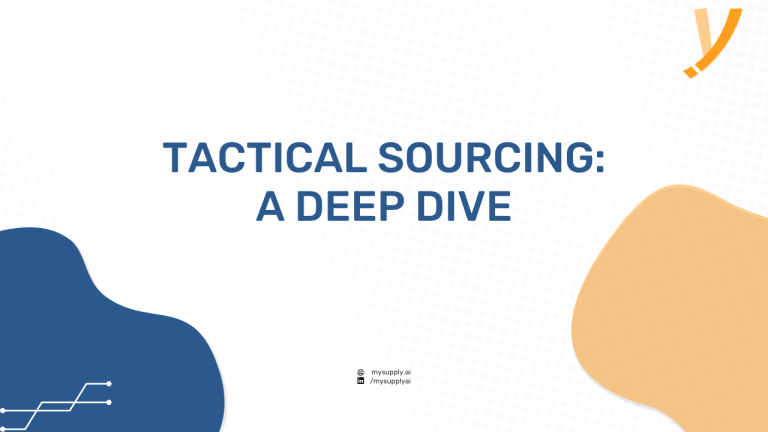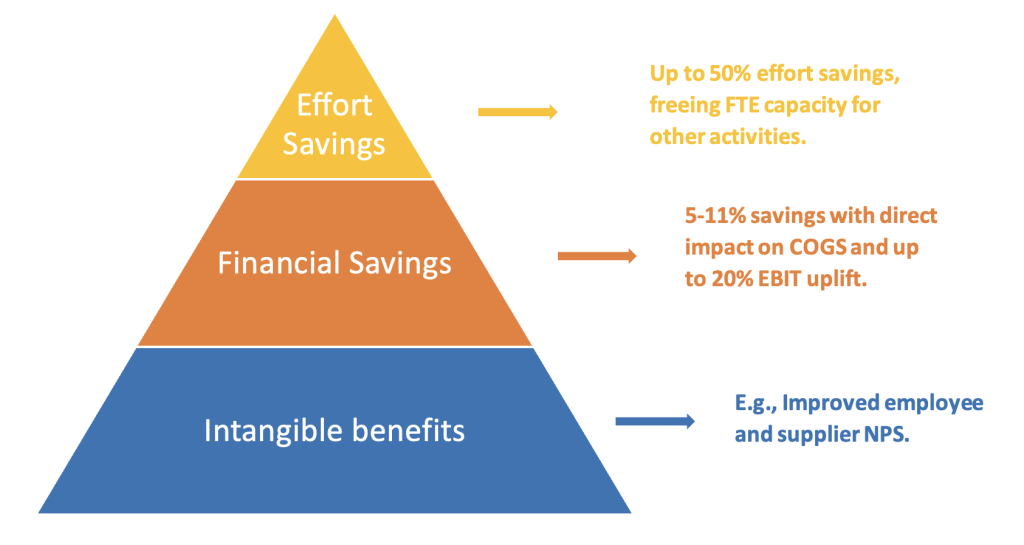
What is Tactical Sourcing?
Thousands of purchase requisitions land in the tactical sourcing department daily, to be routed to and processed by the responsible category buyer. Whether submitted in a spreadsheet or an ERP system, by stakeholders as far from the procurement world as possible, or by teams with expertise in that area, they have one thing in common. They need to be processed fast.
No matter how well a particular category is managed or how efficient the assigned buyer is, these PRs will never get the attention their peers who land in strategic sourcing get. Some would argue that this was always the whole idea of tactical sourcing. If the PR value is below a specific threshold and one offer is already present, the buyer can move on with converting to PO, and that’s that. PR to PO automation, framework contracts and discounts on catalogues are as good as it gets in pursuit of managing tactical spend. Any additional attempts for market research, RFX, quotes comparison, or negotiation are rightfully perceived as non-viable as their efforts exceed the potential gain by orders of magnitude.
What no one would argue about is that this approach leaves a ton of money on the table. Strategizing tactical spending might be one of the first entries in the to-do list of a CPO or CFO if they thought it was possible. The potential impact on COGS and EBIT would be beyond comprehension, especially at a large enterprise scale.
The Automation Wall
Efforts to manage that spend area often end with oversimplified PR to PO automation. The result is usually a variation of the following: “Reduced the processing time of PR to PO from 12 to 4 days for 89% of the PRs in tactical sourcing, which helped redeploy 19 FTEs to other activities.” The results of this automation are, without doubt, beyond impressive. However, financial losses due to missed savings opportunities are overlooked. And looking for the next leap in sourcing automation is an obligation of every forward–thinking procurement leader. The next logical step is to introduce a near–human intelligence in automation, which can apply an individual approach to any PR at scale. This is where we at mysupply channel all our passion, determination and efforts.
mysupply’s Approach
Demand Bundling
No matter if the tactical sourcing of our customers is still in the manual stage or if they have robust sourcing automation in place, we introduce additional layers of strategic processing of demands. We start at the source by consolidating purchase requisitions with the help of LLMs in logical bundles based on category, geographical region, urgency, and more. The result is fewer transactions but, more importantly, increased attractiveness for suppliers.
Supplier Identification
Having the demands bundled we then proceed to identify viable suppliers by processing master data and organization–wide purchase history through LLMs. This step makes the identification of possible suppliers effortless and instantaneous. The result is tens of potential suppliers for each requested group of items.
RFX Process
The following step automatically collects offers from suppliers, creating a representative sample size and up-to-date market overview. The RFX process is structured and automatically customized according to the commodity group, leaving a spotless audit trail.
Negotiation
All offers are automatically analyzed considering any customer–defined factors such as quality, experience, or sustainability scores and each of the groups is automatically assigned a negotiation strategy. The negotiation is executed fully and automatically by the mysupply, without human effort. The result is 5-11 % savings, comparable to a situation in which a buyer sends an RFQ to 10 suppliers, analyses their offers, and conducts two rounds of phone negotiations with each one of them.

